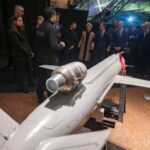
A mix of space and airborne assets is likely required for a future ground moving target indication (GMTI) replacement for the Northrop Grumman [NOC] E-8C Joint Surveillance Target Attack Radar System (Joint STARS) aircraft. While the U.S. Air Force seeks to avoid fielding large, vulnerable intelligence, surveillance and reconnaissance (ISR) aircraft as the service retools for "Great Power Competition" to counter China, the ISR payloads of drones may be too small for GMTI, low Earth orbit (LEO) satellites face the…














